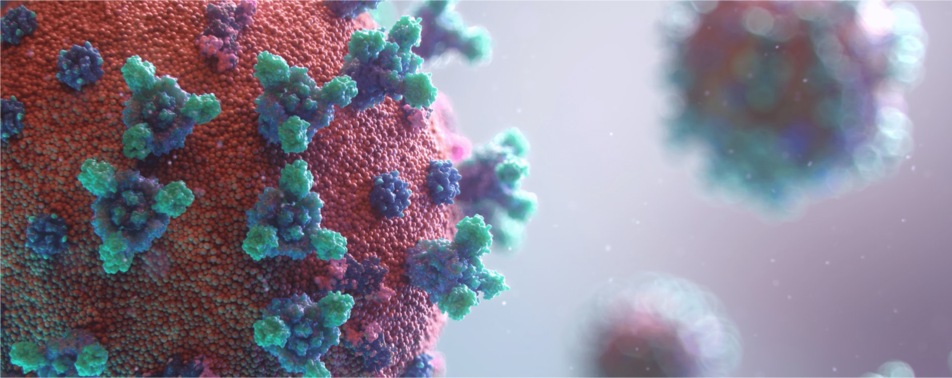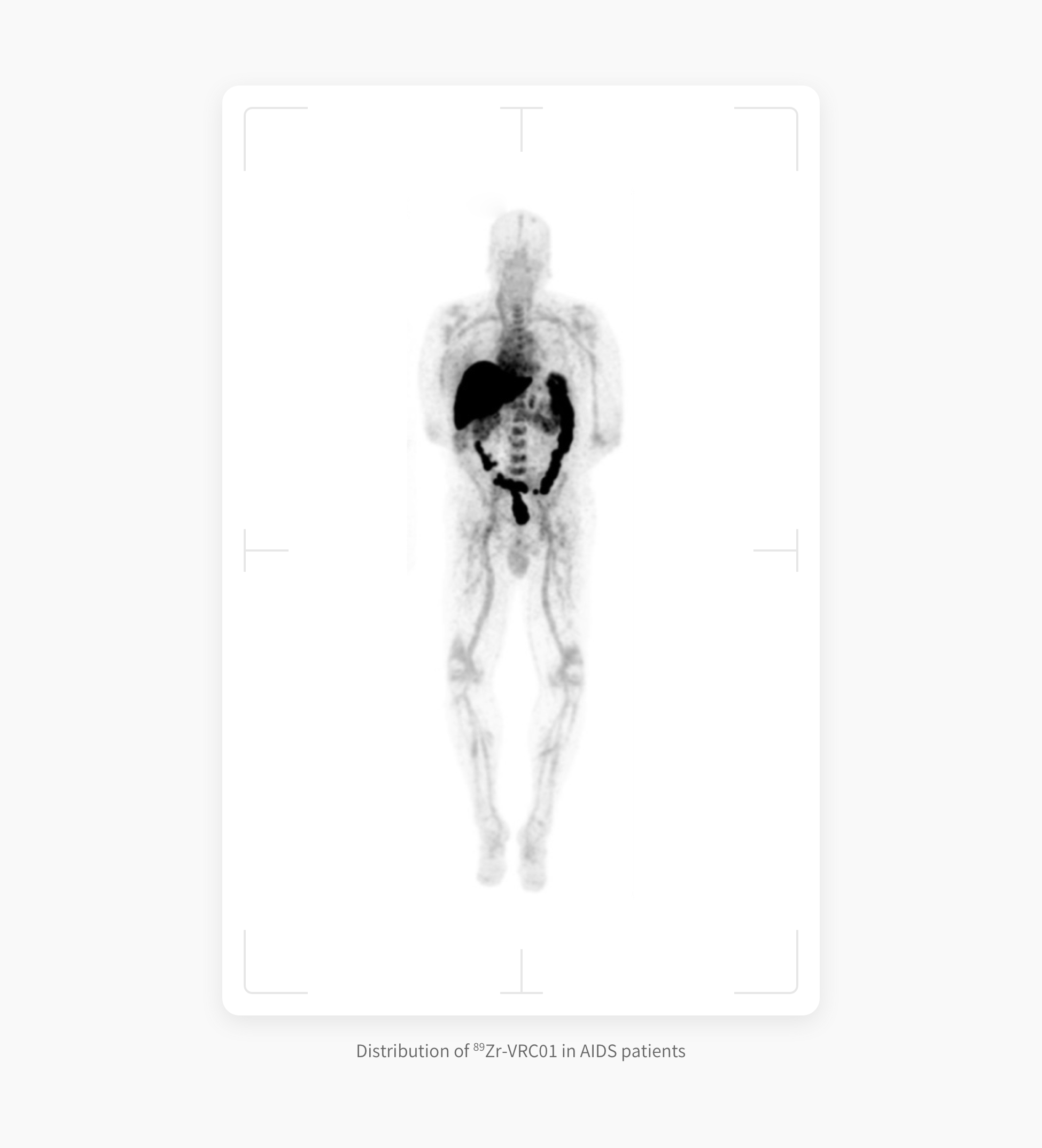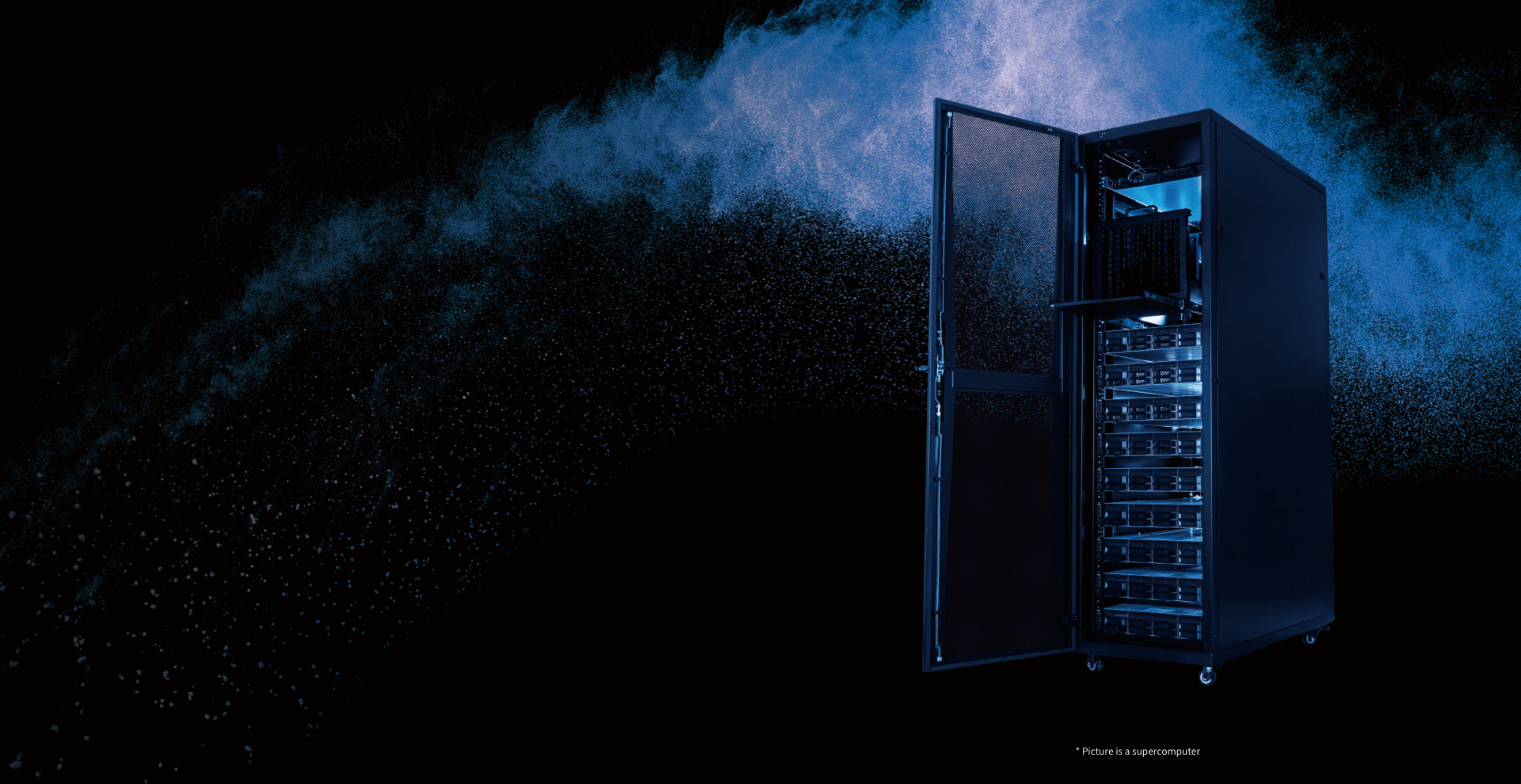02
The Visualization of HIV Viral Load in the Whole Body for the First Time
When conventional examination methods reach their limits, molecular imaging equipment that allows for the visualization of human body at the molecular level offer new options.
Molecular imaging has existed for decades, but hadn't yet been applied to HIV clinical testing because there is no tracer for HIV, and the equipment performance isn't good enough for high-definition imaging of virus in the patient's whole body. In 2019, University of California, Davis introduced the world's first Total-body PET/CT, the uEXPLORER®. This machine increased the axial field of view from the conventional 15cm to the subversive 2m, and increased the sensitivity by 40 times. It realized a total body scan from head to toe in one bed position for the first time, shortening the conventional MI examination time of 20 minutes to 1/40. It prolonged the imaging time to 9 half-lives and supported ultra-low-dose
imaging at 1/40 to 1/50 of the drug dose. As a result, it was called the "Hubble Telescope" that could observe the inside of human body, and it opened a new window for HIV research.
In the experiment, the researchers used a new type of antibody tracer - 89Zr-VRC01. VRC01 is a broad-spectrum antibody of HIV that can bind to HIV accurately. 89Zr that is used to label the antibody works as if lighting up a small lamp for each virus. These small lamps could then be accurately captured by PET/CT. The antibody tracers fully bound to the viruses 72 hours after the drug was injected into the body. Then, a patient who had taken antiretroviral therapy (ART) for 10 years was scanned by the total-body PET/CT uEXPLORER. A new picture never seen before appeared in front of the researchers for the first time: people directly and clearly saw the distribution of HIV in various parts of the body with the naked eye. This meant that we could determine the parts of the body with HIV infection and evaluate viral load through this method. There is huge potential for the equipment to be used in the clinical treatment and scientific research of AIDS.


